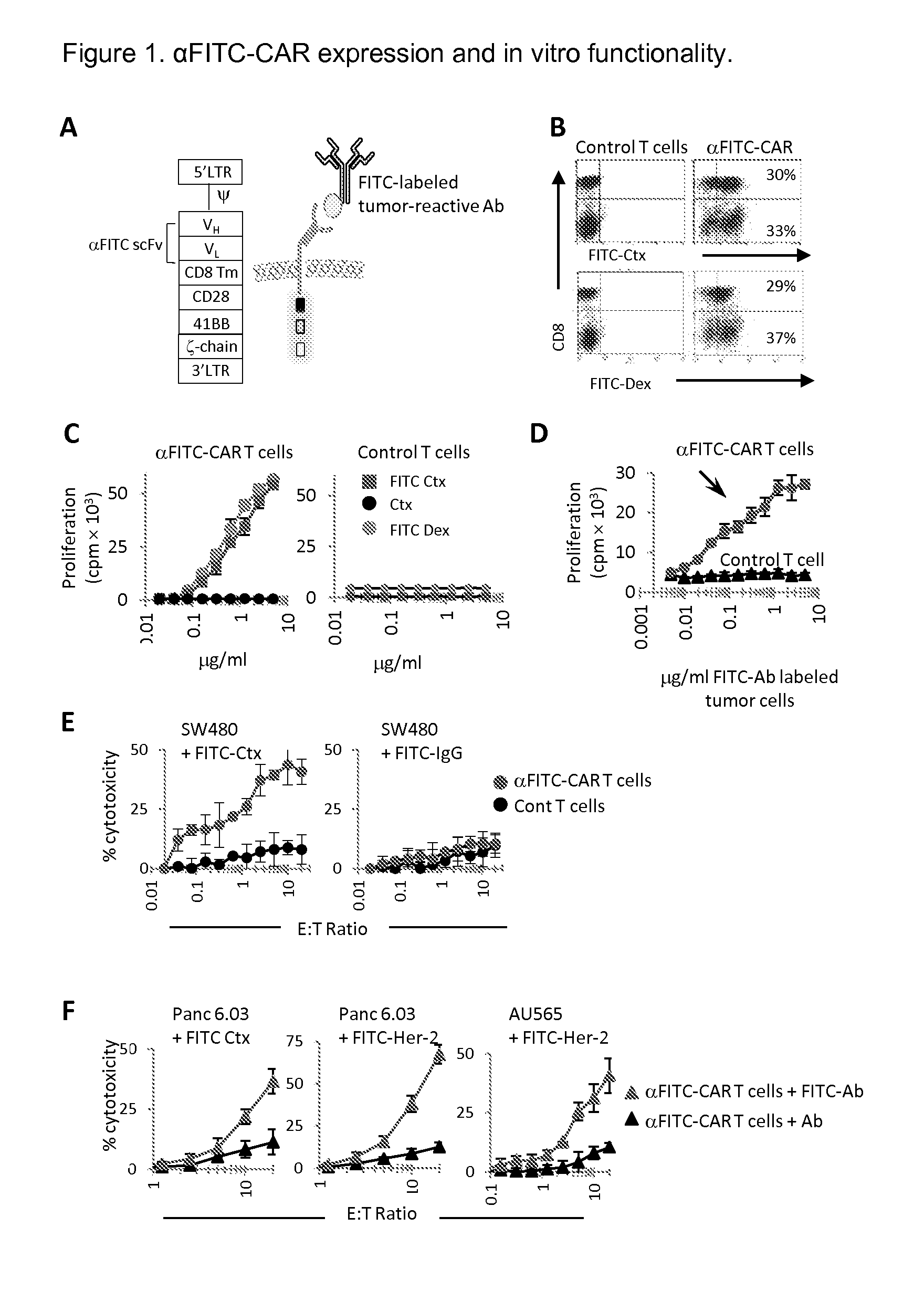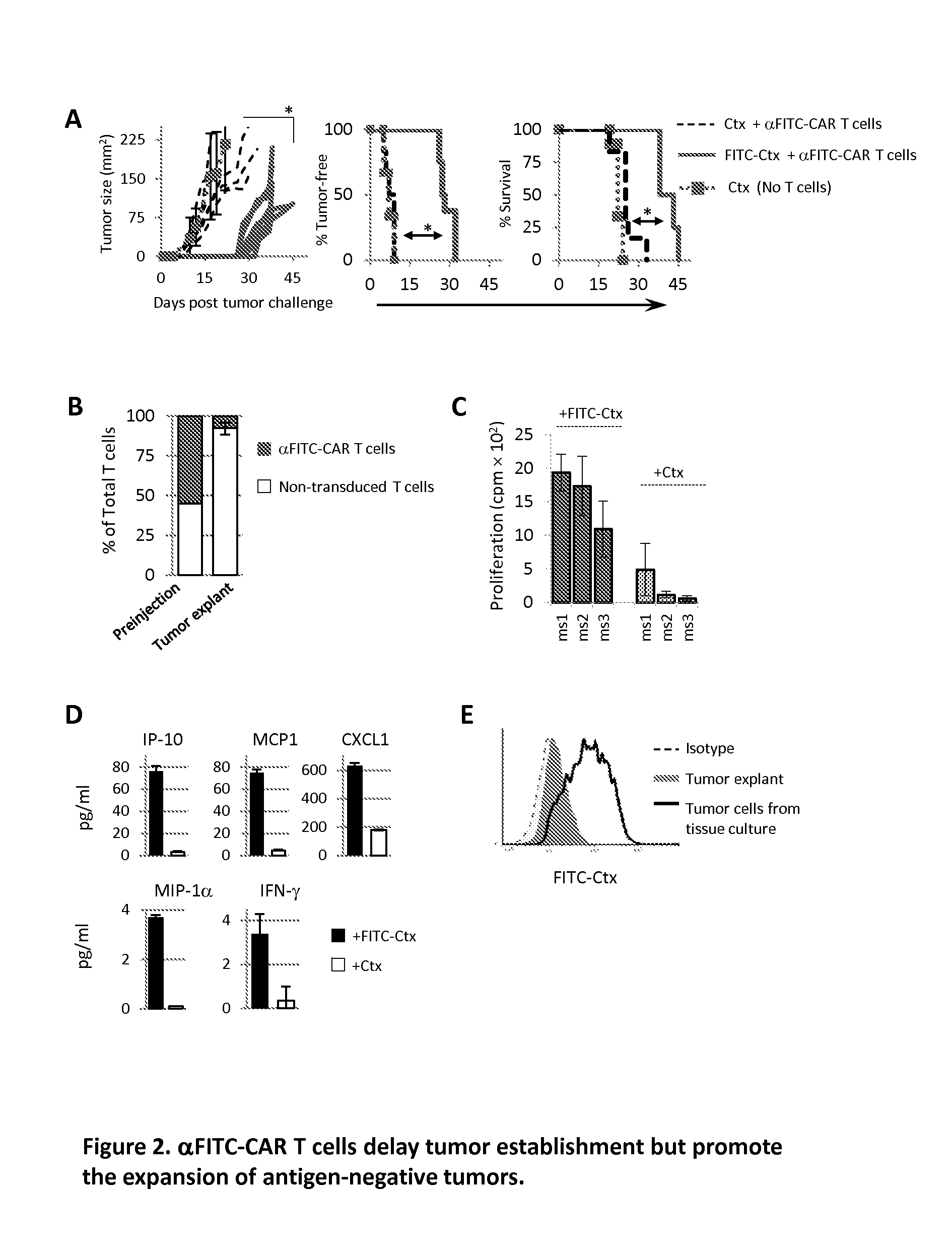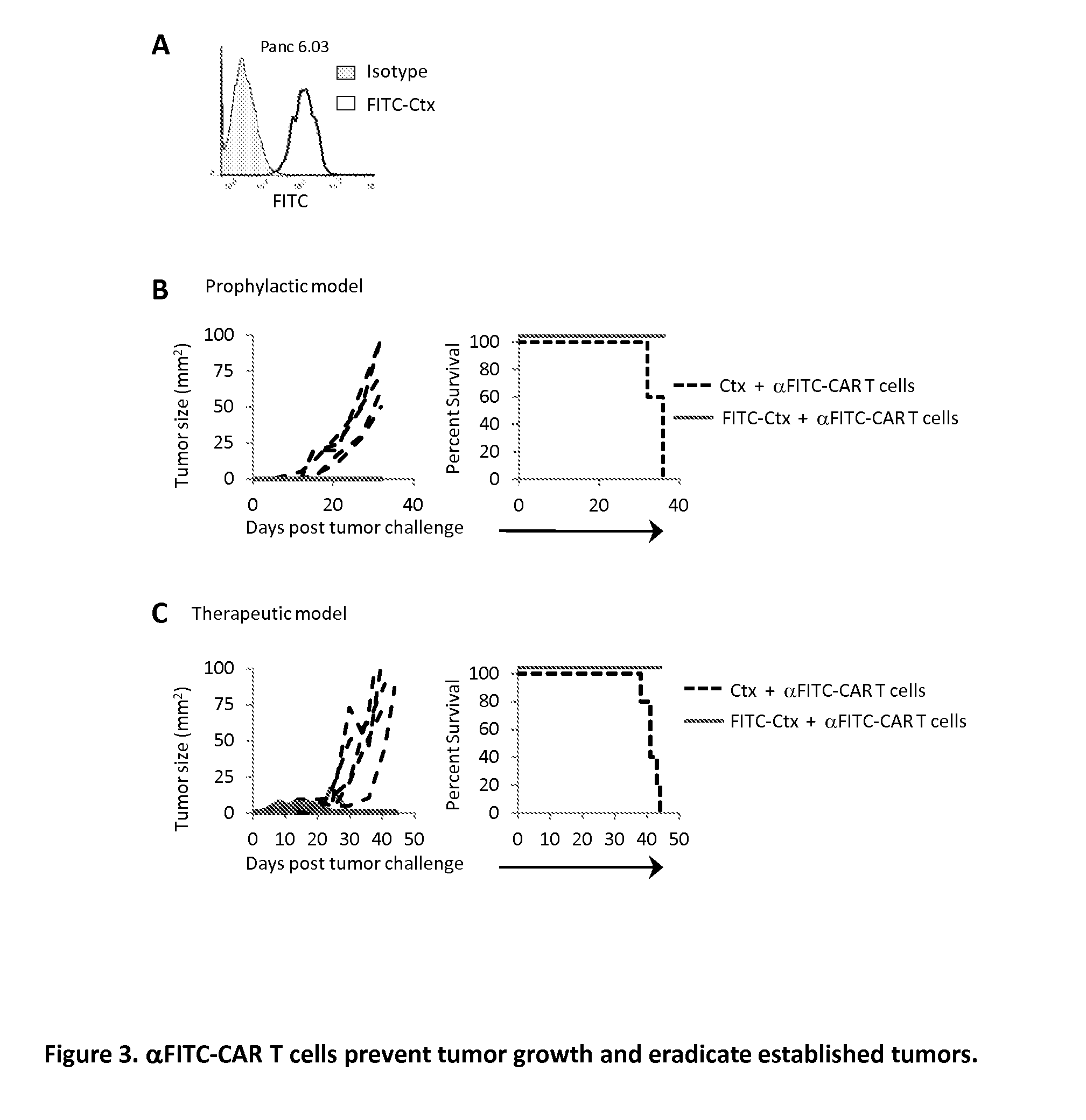Universal Anti-tag chimeric antigen receptor-expressing t cells and methods of treating cancer
a technology of universal anti-tag chimeric antigen receptor and tumor antigen, which is applied in the field of tumor evasion, financial cost and laborious tasks associated with identifying and engineering scfvs against a variety of tumor antigens,
- Summary
- Abstract
- Description
- Claims
- Application Information
AI Technical Summary
Benefits of technology
Problems solved by technology
Method used
Image
Examples
experiment 1
[0082]
[0083]Peripheral blood mononuclear cells were activated with anti-CD3 mAb in the presence of IL-2 followed by transduction with the α-FITC-CD28-41BB-CD3ζ-CAR vector (referred to as αFITC-CAR) as shown in FIG. 1A and as described above. The expression of the αFITC scFv on T cells was analyzed by staining cells with anti-CD8 (or anti-CD3) and FITC-labeled cetuximab (FITC-Ctx) or FITC-labeled dextran (FITC-Dex) beads. On average, 60% of total T cells expressed αFITC-CAR (FIG. 1B). To confirm their functionality and specificity, αFITC-CAR or control (mock transduced) T cells were activated using titrating concentrations of plate-bound FITC-Ctx, unbound cetuximab, or FITC-Dex beads. αFITC-CAR T cells proliferated vigorously and in a dose dependent manner following stimulation with FITC-Ctx and FITC-Dex but did not divide in response to stimulation with Ctx alone (FIG. 1C, left panel). In contrast, control T cells did not proliferate to FITC-Ctx or FITC-Dex (FIG. 1C, right panel). T...
experiment 2
[0086]
[0087]The ability to re-direct αFITC-CAR T cells to eliminate tumor cells in vivo was examined. Mice were injected s.c. with SW840 colon cancer cells followed by the administration of FITC-Ctx or Ctx via i.p. injection. One day later αFITC-CAR T cells were administered via i.v. injection into the tail vein. Tumor growth kinetics was similar between mice receiving αFITC-CAR T cells plus Ctx and those receiving Ctx alone, FIG. 2A left panel. In sharp contrast, tumor growth was greatly suppressed in mice receiving αFITC-CAR T cells plus FITC-Ctx (FIG. 2A left panel). Likewise, the tumor-free occurrence (FIG. 2A middle panel) and overall survival (FIG. 2A right panel) was significantly improved in mice receiving αFITC-CAR T cells plus FITC-Ctx as compared with control groups. In spite of this survival advantage however, mice receiving a-ITC-CAR T cells plus FITC-Ctx succumbed to tumor challenge within 55 days of tumor implantation.
[0088]The mechanisms contributing to the failure o...
experiment 3
[0092]
[0093]Given the heterogeneity of EGFR expression on SW480 cancer cells, the ability of αFITC-CAR T cells to destroy a population of cancer cells in which all of the cells expressed the antigen was examined. The pancreatic cancer cell line Panc 6.03 was selected as the cells uniformly express EGFR (FIG. 3A). The cytolytic activity of αFITC-CAR T cells was examined in a prophylactic tumor model using the same procedure described in Experiment 2. Tumor growth was clearly suppressed in mice receiving αFITC-CAR T cells plus FITC-Ctx whereas mice receiving α-FITC-CAR T cells plus Ctx demonstrated rapid tumor growth, FIG. 3B left panel. All mice receiving αFITC-CAR T cells plus Ctx succumbed to tumor challenge within 35 days of tumor implantation, FIG. 3B right panel. It is worth noting that the administration of FITC-Ctx via i.v., i.p., or intratumoral injection all resulted in antibody localization to the tumor (data not shown). An alternative method to redirecting T cells to the t...
PUM
 Login to View More
Login to View More Abstract
Description
Claims
Application Information
 Login to View More
Login to View More - R&D
- Intellectual Property
- Life Sciences
- Materials
- Tech Scout
- Unparalleled Data Quality
- Higher Quality Content
- 60% Fewer Hallucinations
Browse by: Latest US Patents, China's latest patents, Technical Efficacy Thesaurus, Application Domain, Technology Topic, Popular Technical Reports.
© 2025 PatSnap. All rights reserved.Legal|Privacy policy|Modern Slavery Act Transparency Statement|Sitemap|About US| Contact US: help@patsnap.com



